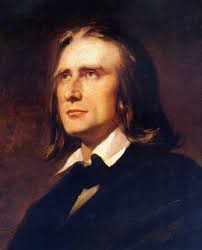The History of Franz Liszt’s Piano Concerto No. 1
Franz Liszt’s Piano Concerto No. 1 in E-flat major, S.124, stands as one of the most brilliant and revolutionary works in the Romantic piano repertoire. Known for its dazzling virtuosity, innovative structure, and dramatic flair, this concerto not only showcases Liszt’s mastery of the piano but also his boldness as a composer who constantly pushed the boundaries of form and expression. The history of this concerto spans over two decades and reflects Liszt’s artistic evolution during one of the most productive periods of his life.
A Long Gestation
The origins of Piano Concerto No. 1 trace back to the early 1830s, a time when Liszt was emerging as the most dazzling piano virtuoso in Europe. He first sketched thematic material for the concerto as early as 1830, but the work went through numerous revisions and reworkings before it reached its final form. Liszt continually refined the score, testing it during rehearsals and performances, and incorporating feedback and his own changing artistic tastes.
By the mid-1840s, Liszt had begun to focus more on composition than touring. It was during his time in Weimar—where he served as Kapellmeister from 1848—that he devoted serious effort to completing and orchestrating the concerto. With the help of friends and colleagues, including the composer Joachim Raff, Liszt finalized the orchestration and structure.
Premiere and Reception
The official premiere of the Piano Concerto No. 1 took place on February 17, 1855, in Weimar, with Liszt himself at the piano and the orchestra conducted by Hector Berlioz, a close friend and fellow musical innovator. The performance was a triumph and confirmed Liszt’s reputation not only as a pianist of unmatched brilliance but also as a composer of considerable orchestral skill.
A few years later, in 1857, Liszt made final revisions to the score, and this version became the standard. The concerto was eventually published in 1857 by Breitkopf & Härtel.
Structure and Innovation
Liszt’s Piano Concerto No. 1 is noted for its four-movement structure, which is unusual for a concerto. However, the movements are performed without pause, creating a seamless, continuous musical journey. The concerto is built upon a cyclical form, meaning that themes recur and evolve throughout the piece, unifying the entire work. This technique was highly innovative at the time and influenced later composers, including Saint-Saëns and Rachmaninoff.
The opening movement (Allegro maestoso) introduces the bold, martial main theme, which recurs in various guises throughout the concerto. The second movement (Quasi adagio) provides a lyrical and introspective contrast. The third (Allegretto vivace – Allegro animato) is a scherzo-like interlude with playful rhythms and dialogues between piano and orchestra. The final movement (Allegro marziale animato) brings a triumphant return of earlier themes in a spirited and virtuosic conclusion.
A Showpiece for Virtuosity
Liszt’s concerto was tailor-made for his own prodigious talent, and it remains one of the most technically demanding works in the piano repertoire. It features rapid octaves, dazzling runs, wide leaps, and complex interplay with the orchestra. However, the work is not mere display; it is also deeply expressive and musically cohesive, reflecting Liszt’s maturing compositional voice.
Legacy
Today, Piano Concerto No. 1 is a staple of the concert repertoire and a favorite among pianists eager to demonstrate both their technical prowess and interpretive depth. It helped redefine what a piano concerto could be—more than a platform for virtuosic display, it became a dramatic dialogue between soloist and orchestra, infused with thematic unity and emotional intensity.
Liszt’s first piano concerto stands as a landmark of Romanticism: bold, innovative, and brimming with passion. Its history mirrors Liszt’s own journey—from the youthful prodigy sketching ambitious ideas to the seasoned master crafting one of the most enduring works in the piano concerto literature.


Comments are closed